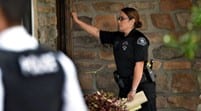Home / Insights / Whitepapers
The Winds of Change Are Blowing. Will You Be Prepared?
Recent protests over law enforcement’s use of force have sparked many conversations in cities and counties across the nation. Some of the proposed changes will have a direct impact on dispatch centers – especially those requiring telecommunicators to determine the need for the services of additional agencies as part of their response plan. Many voices are suggesting that social services (i.e., those available by calling 3-1-1 or 2-1-1) could augment law enforcement, fire, and EMS responses and free up public safety for other higher-priority events and possibly stop an incident from escalating.
Which assets are dispatched to an event and how this occurs are about to change.
Communications directors and telecommunicators must be actively engaged from the inception of these change discussions to help direct the narrative, prepare their centers, and mitigate as much risk as possible. Most dispatch centers across the country are not fully staffed for a variety of reasons. The changes currently being discussed will increase the workload and have the potential to increase overtime and stress in dispatch center personnel, not to mention exacerbate existing morale issues
Successful long-term operational change starts with planning, structure, and organization.
This new narrative presents the opportunity to acknowledge that 9-1-1 Centers/Emergency Communication Centers are and always have been the first line of response and the initiators of services, whether in response to a crime in progress, a fire, or a medical emergency. The quality of service from your 9-1-1 Center is a window into the quality of response by your Police Department, Fire Department, Emergency Medical Services and, soon to be, social services.
Any new resources added to a dispatcher’s responsibilities must be vetted in the same way as adding a new fire station, enforcement agency, or technology. We have seen the challenges to achieve Next Generation 9-1-1 with multi-media capabilities. The challenges will be even greater in the case of public service personnel with a different mission.
All stakeholders must be involved in developing policies and procedures for dispatching non-public safety personnel to an incident.
In addition to the public service personnel, Police and Fire Chiefs, Sheriffs, dispatchers, patrol, City Council, County Commissioners, Human Resources, unions, and community representatives all need a voice in the discussions. They must have a clear understanding of the operational challenges to be resolved.

As we know, Law Enforcement, EMS, Fire, and Dispatch are 24/7/forever operations. When a call comes into a 9-1-1 Center, the call-taker asks questions, sends the information to the dispatcher who assesses the information, selects a response, and issues the dispatch. Calls are not always this routine but typically are covered by policies and procedures that allow the dispatched first responders to be quick, correct, and effective.
Now consider incorporating social services into this proven and field-tested model. Social services personnel have different skill sets and objectives. They may not be available 24/7 to respond. New methodologies must be developed to incorporate these services into the emergency response model. Federal Engineering is frequently retained for such endeavors.
An outside perspective is always beneficial in accomplishing the objective. Public safety consultants make no assumptions, take nothing for granted, and question everything.
An effective public safety consulting approach should include several key steps:
- First, they must help you develop an understanding of where your agency is today. What is the overall health of your 9-1-1 Center?
- Next, they must work with you to perform a detailed assessment of your staffing, standard operating procedures, number of calls, response times, overtime, and sick leave, as well as the age and configurability of your Computer Aided Dispatch and mobile data systems. Before increasing your workload and the complexity of response plans, you must determine if you can implement change successfully. The last thing you want is to add new problems to existing problems.
- Finally, everyone involved must understand the impact of the new resources. While understanding the impact of adding a new fire station is straightforward, incorporating totally different services is breaking new ground. There are many questions to be answered. What are the expectations? What are the service agencies’ capabilities? What is their schedule for 24/7 staffing? How do you contact them? Are they going to require more attention than you are prepared to give? How do you track them? Should you separate the new services within the 9-1-1 Center to achieve the desired results?

Federal Engineering’s subject matter experts know that operation chiefs, dispatch center personnel, and the management of the social services organizations must be fully engaged in the conversation to answer these and other questions. For example, what happens when an event escalates? Depending upon the circumstances, do you send an officer to protect the social services personnel and another to handle the event? Under what conditions should a paramedic to accompany the social services personnel?
Dispatching additional non-public safety resources to incidents can be helpful and provide needed support to the community. But it will require discussions and analyses to be successful. Planning, revamping of policy and procedures, and building consensus will determine the ultimate success of this evolution of services. Agencies across the country are under increased public scrutiny. Controlling expectations while implementing changes this significant must be done correctly.
Federal Engineering has been assisting organizations integrate new technologies, services, and operational methods for decades.
This overall initiative will benefit from an outside perspective and a fresh set of eyes. Better than anyone, we understand that with proper planning, social services and others can further enhance your response to the public’s needs.
Federal Engineering is known for its ability to break things down to the bare bones and examine the parts based on experience and industry knowledge. We are unencumbered by local opinions or politics and can be relied upon as trusted advisors to deliver solutions that meet our client’s needs.
